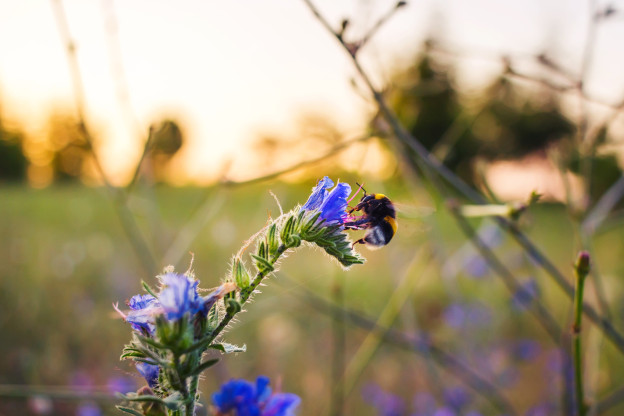Bees are vital pollinators and welcome visitors in any garden to maximise the distribution of nectar and to encourage plant growth. As bees pollinate many of the plants we eat, by helping bees we in turn help ourselves and our environment to flourish.
You can encourage pollinating insects to visit your garden by providing food, shelter and water. At Bury Hill, we have combined a list of our favourite tips to help you create your very own bee-friendly garden.
1.Best plants for bees:
Finding the right plants for bees is easier than you think – with thousands of possibilities available, you are guaranteed to find a suitable bee-friendly plant for your garden at your nearest centre. These include:
-
Mint
-
Oregano
-
Lavender
-
Lily of the Valley
-
Witch-hazel
Top tip: Bees notice the colour purple in particular, so integrate purple foliage into your beds and borders where you can.
2. Bee-friendly flowers:
Bees are most attracted to bright, brash blooms which give out an alluring scent.
It is important, however, to select a range of flowers that will extend beyond the flowing period to encourage bees to visit your garden all year round.
Single flowers that are rich in pollen and nectar are perfect for visiting bees. These include:
-
Sunflowers
-
Wildflowers
-
Blue Geraniums
-
Agastache
-
Snapdragon
To create optimal conditions for plant growth, add soil conditioners to your soil. This will ensure that your plants are supported and receiving the necessary nutrients they need to grow and to support bees.
3.Plant strategically:
Plant flowers in suitable locations to maximise how bees interact with your garden. Our top tips for strategic planning include:
-
Growing plants in blocks
-
Plant throughout the seasons to provide food
-
Allow grass to grow to ensure there is maximum amount of shelter available.
Creating an ideal environment for bees to visit and enjoy is key. Follow these steps for visible results.
4. Create bee houses:
Bees create homes in a variety of locations across the garden. Places include long-grass, in the eave of a roof and inside a tree. Left to their own devices, beehives in the garden can become troublesome, but there are alternatives which you can manage.
Why not create your own bee hotel to encourage bees to visit your garden? Made from waste wood and logs, bee houses can be made relatively cheaply but with maximum impact for your garden.
Place the bee house in a corner of the garden that is sheltered from adverse weather conditions but with access to sunshine. Position the bee house in a south-facing position if you can, but not in the way of direct sunlight. This will provide bees with the best possible conditions and encourage them to visit your plants and flowers.
5. Bee conscious:
Be aware of bees coming to your garden and ensure you provide optimal conditions for them in your garden. This consciousness can include everything from reducing the amount of chemical pesticides and fertilisers you use, to allowing parts of your garden to grow wild. As some weeds are a rich source of nectar and pollen, allowing them to grow in parts of your garden will be beneficial to bees. Reducing the amount of times you cut the lawn will allow more lawn flowers to grow, providing a fantastic feeding opportunity for bees.
For more information or to speak with a member of our team on how to create your perfect bee garden, contact us here.
